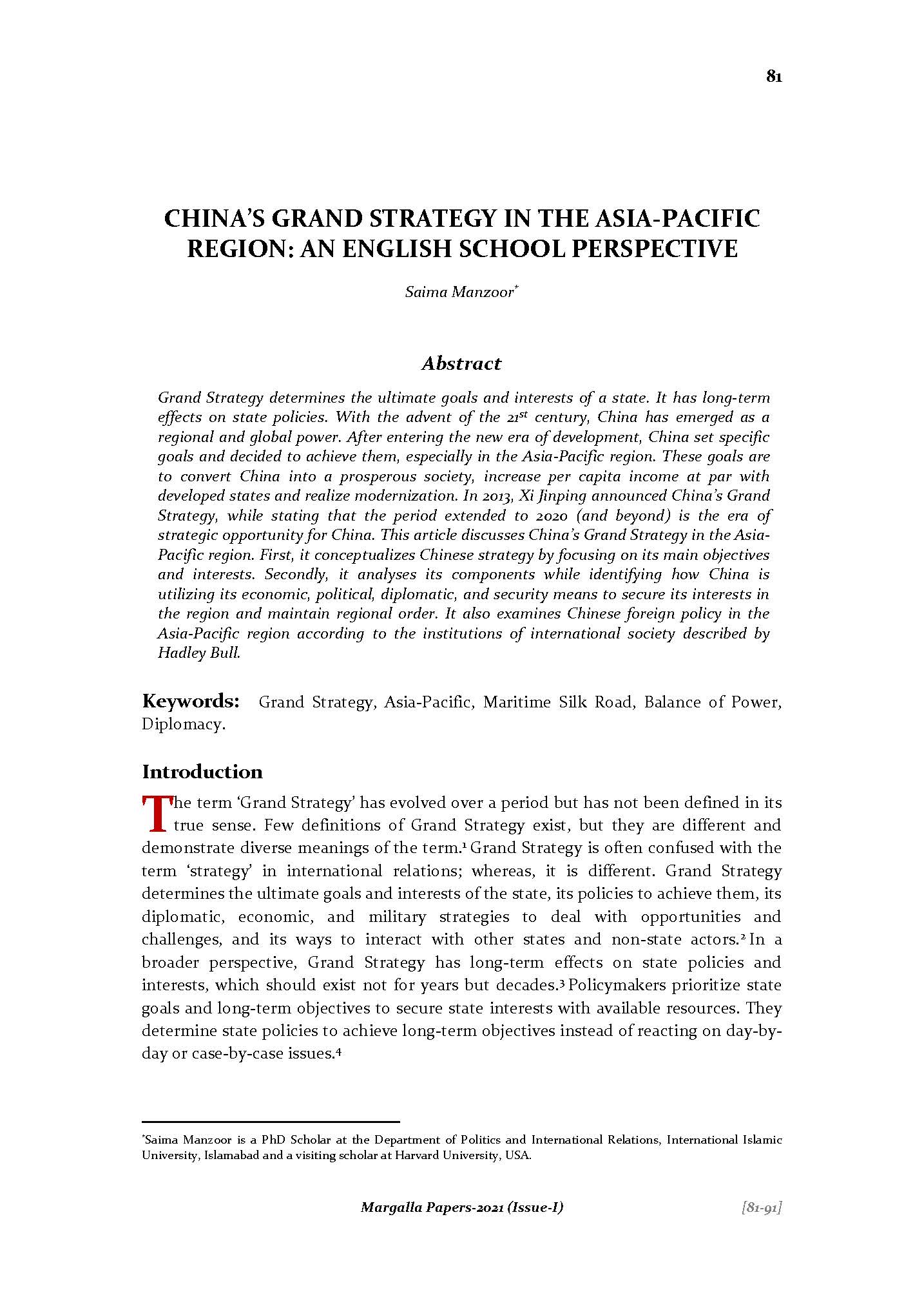CHINA’S GRAND STRATEGY IN THE ASIA-PACIFIC REGION: AN ENGLISH SCHOOL PERSPECTIVE
DOI:
https://doi.org/10.54690/margallapapers.25.1.53Keywords:
Grand Strategy, Asia-Pacific, Maritime Silk Road, Balance of Power, DiplomacyAbstract
Grand Strategy determines the ultimate goals and interests of a state. It has long-term effects on state policies. With the advent of the 21st century, China has emerged as a regional and global power. After entering the new era of development, China set specific goals and decided to achieve them, especially in the Asia-Pacific region. These goals are to convert China into a prosperous society, increase per capita income at par with developed states and realize modernization. In 2013, Xi Jinping announced China’s Grand Strategy, while stating that the period extended to 2020 (and beyond) is the era of strategic opportunity for China. This article discusses China’s Grand Strategy in the Asia-Pacific region. First, it conceptualizes Chinese strategy by focusing on its main objectives and interests. Secondly, it analyses its components while identifying how China is utilizing its economic, political, diplomatic, and security means to secure its interests in the region and maintain regional order. It also examines Chinese foreign policy in the Asia-Pacific region according to the institutions of international society described by Hadley Bull.
Bibliography Entry
Manzoor, Saima. 2021. "China’s Grand Strategy in the Asia-Pacific Region: An English School Perspective." Margalla Papers 25 (1): 81-91.

Downloads
Published
How to Cite
Issue
Section
License
Copyright (c) 2021 Saima Manzoor

This work is licensed under a Creative Commons Attribution-NonCommercial 4.0 International License.












